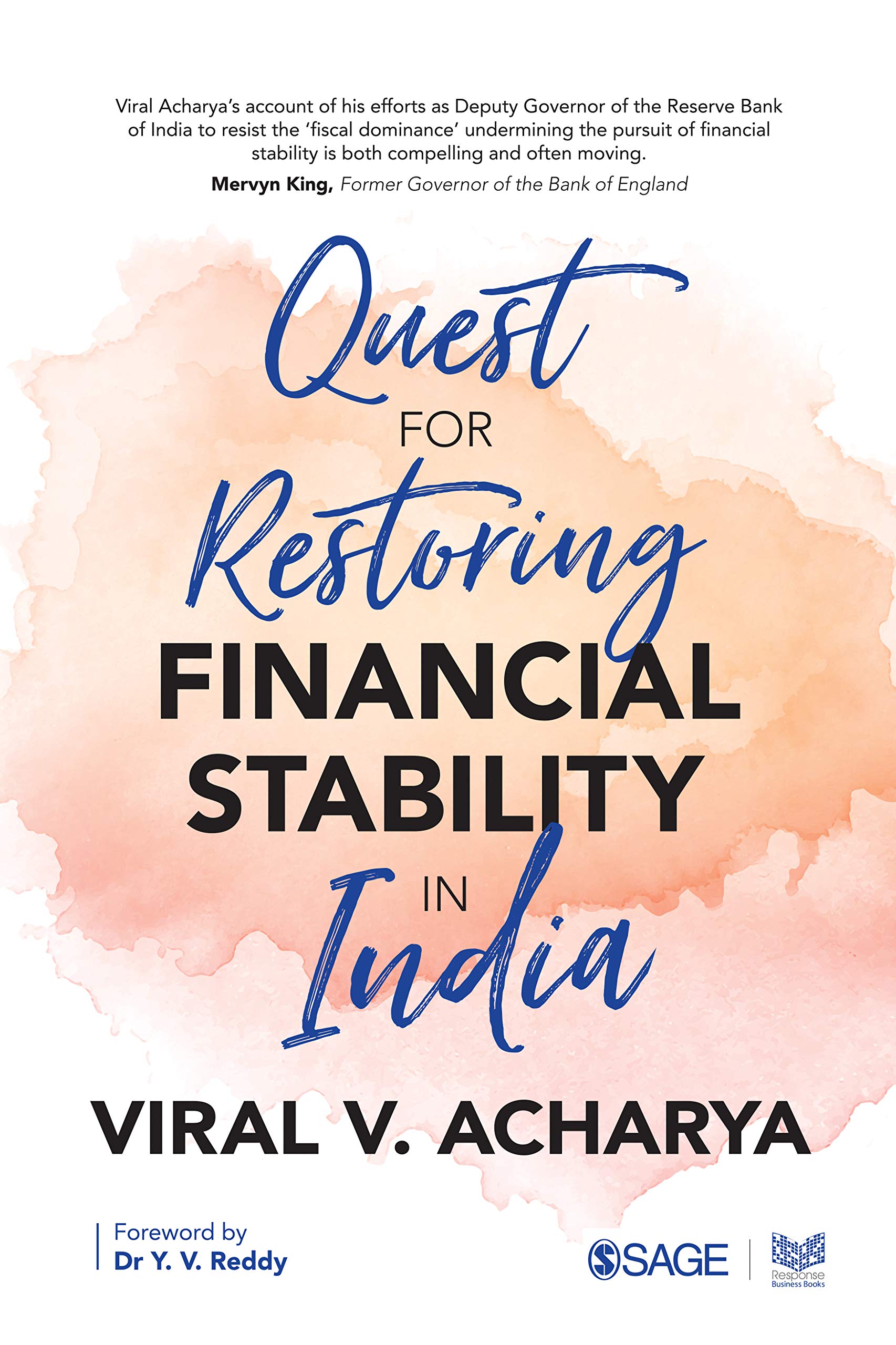Book : Quest for Restoring Financial Stability in India
Author: Viral V. Acharya
Publisher: Sage
Price: Rs 695
Viral Acharya had a short stint as deputy governor of the Reserve Bank of India before he resigned prematurely. His resignation followed the exits of Raghuram Rajan and his successor, Urjit Patel, as RBI governors. The last five years have seen the emergence of a strained relationship between North Block and Mint Street. This book is a definitive account of the clash of ideas that continues between the RBI and the finance ministry. Acharya’s book is technical and will be appreciated more by bankers than lay readers. However, he has tried to make the book accessible to readers with an elementary knowledge of finance. The crux of his message is not about the technicalities of bank management and regulatory oversight; it is essentially about the differences in perception on economic policies — chiefly the monetary policy of the RBI and the fiscal policy of the Government of India.
The primary proposition around which the differences emerge is how independent should the central bank be. The central bank, according to Acharya, should be left alone to ensure stability in the financial system. This can be brought about with tight rules and regulations, good governance, and non-interference from the government. The RBI is supposed to have roles that go beyond regulatory oversight. Two fundamental policy issues are often debated while considering monetary policy priorities: whether to stimulate the economy by keeping interest rates low and monetizing government debt or whether to ensure price stability by keeping inflation rates low.

Quest for Restoring Financial Stability in India by Viral V. Acharya, Sage, Rs 695 Amazon
Historically, the RBI had been closely controlled by the government. Since the mid-1990s, there had been a global trend of making central banks independent. Until the Fiscal Responsibility and Budget Management Act of 2003, the RBI would go into the primary market for government securities and buy government debt. The RBI was not allowed to do so after the passage of this legislation. The RBI made inflation-targeting the top-most priority of monetary policy. As far as oversight was concerned, the biggest problem of the banking sector in India was the alarming rise in the ratio of non-performing assets to total assets. The bulk of these bad debts was found in the books of the public sector banks. It was believed that early identification of bad debts and their quick resolution were possible through prudent oversight. The government, Acharya writes, has been increasingly reluctant to allow this to happen, especially during the last five years. He describes a reversal of the healthy trend towards independence of the RBI that was discernible in the first decade of this century.
The reasons for this reluctance lie in what Acharya calls “fiscal dominance”. The government is interested in short-term political goals and expenditures are set according to those priorities. These are typically populist in character and do not constitute proper public investments that build the nation’s capital stock. Tax-to-GDP ratios are kept low, again for political gain. Hence the government has to borrow. It is easier to borrow from the RBI than to borrow from the market where excessive profligacy of the government is likely to be disciplined by the forces of demand and supply. Again, for political expediency, the government has pressurized the RBI to dilute early identification methods, forbearance of default, and even the classification of bad debts. This has made it impossible to maintain the priorities of modern bankers. The balance sheets of the RBI and the public sector banks have become weaker. Government debt is rolled over with the help of a compliant RBI in a phenomenon called evergreening. Political leverage of the central bank is now complete, making the entire financial sector vulnerable to shocks and unanticipated events.
Acharya’s book details this process. His famous analogy from cricket makes the core issue crystal clear. The government plays T20 cricket, while the RBI has the mandate to play Test cricket.











